December
27 was the last day in Jerusalem for half of us,
so we spent the day sightseeing in and around the old city. |
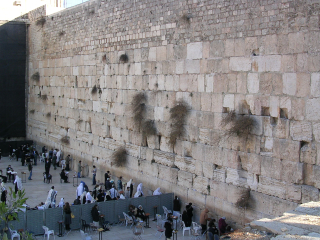 |
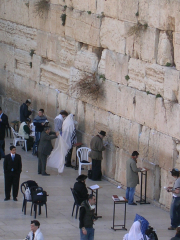 |
The
western wall (or wailing wall) is one of the only portions of the second
temple that remains intact. For Jews, the wall is one of the most
holy sites in Jerusalem and many people come there daily to pray and to
tuck written prayers into the cracks between the blocks. |
| The
Dome of the Rock is a mosque built on the site of the
temples. This particular site is holy to Jews, Christians, and
Muslims, creating a lot of political tension and some attempts to destroy
the mosque. This site, the Temple Mount, has a significant role in
the Israeli-Palestinian conflict and security is very tight. We were not able to go into the mosque, but its
gold dome is the centerpiece of most
panoramic views of the city of Jerusalem. |
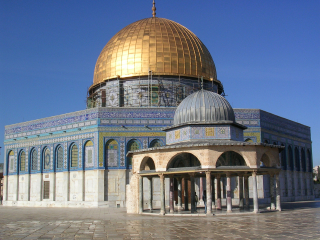 |
| The
next stop was a taxi ride up to the top of the Mt. of Olives and a hike
down, stopping to see various churches and historical sites along the way.
|
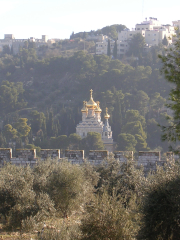 |
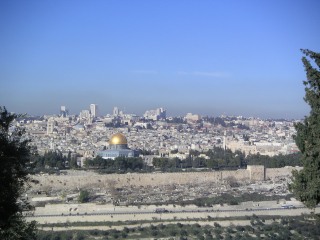 |
View
of the Mount of Olives from the Dome of the Rock (right)
View of Jerusalem from the Mount of Olives (far right) |
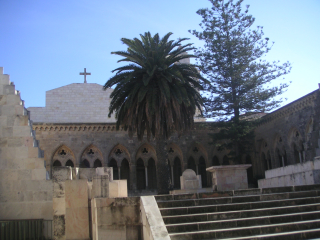 |
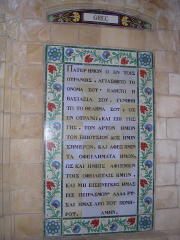
|
Heading
down from the Mount of Olives, we came to the Church of the Pater Noster
("Our Father" in Latin), which contains plaques showing the Lord's Prayer in at least 142
languages (that is how many I counted, but they were all over the place,
so I probably missed some).
Church of Pater
Noster (far left)
Lord's Prayer in Greek (left) |
| The
next stop was the tomb of the prophets Haggai, Malachi, and
Zechariah. Our guide book told us archeological evidence suggests
the tomb is much too recent to be that of the prophets, but we peeked in
to see it anyhow. |
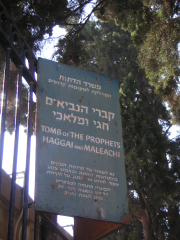 |
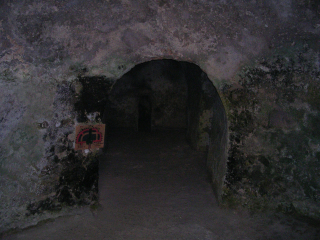 |
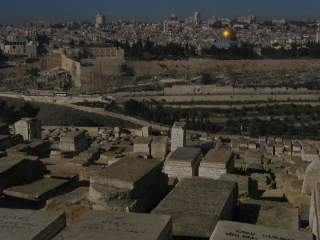 |
This
National Cemetery and Jewish Graveyard is the largest Jewish cemetery in
the world. |
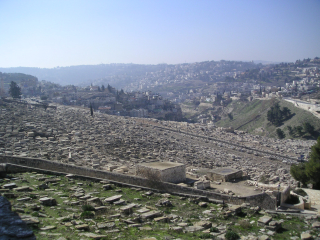 |
| The
Sanctuary of Dominus Flevit was built in the 1950s to mark the spot where
Jesus wept for Jerusalem. The front of the chapel was glass with an
outstanding view. |
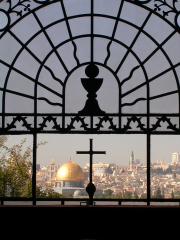 |
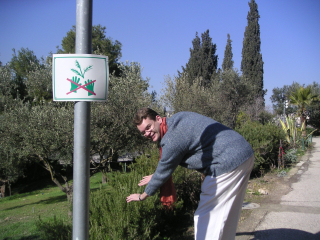 |
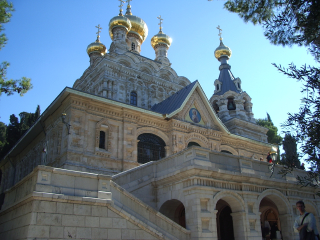 |
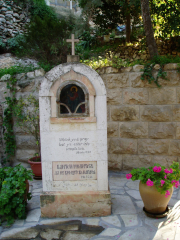 |
The
Russian Church of Mary Magdelene was closed the day I was on the Mount of
Olives, although we had seen it from the Temple Mount. Half of our
group stayed a couple extra days and were able to go back when it was open
to take some pictures. |
| The
last stop on our Mount of Olives adventure was the garden of Gethsemane
(one of them), which is adjacent to the Church of All Nations (Basilica of
the Agony). The Gethsemane grotto and the virgin's tomb were nearby. |
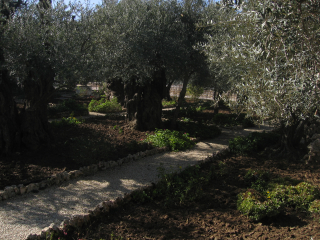 |
Based
on this garden of Gethsemane, it looks like Jesus must have had his own
staff of gardeners to keep the paths straight and pull weeds! |
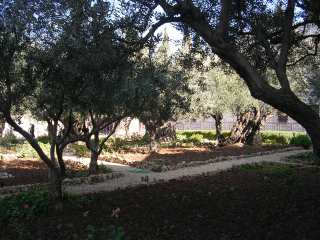 |
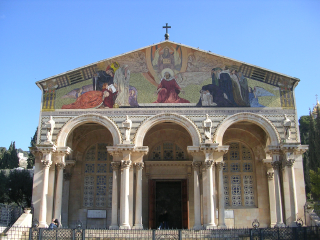 |
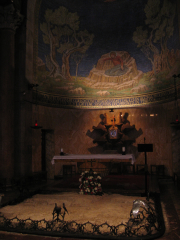 |
The
Church of All Nations is very dimly lit with large purple windows that
create a somber atmosphere, very well-designed for a church that
commemorates the agony of the last days of Christ's life. |
| The
Gethsemane grotto is a cave where Christ left his disciples while he
prayed in the garden of Gethsemane. |
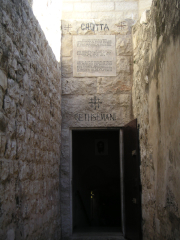 |
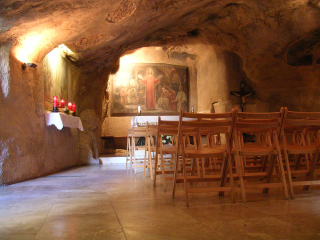 |
| Appropriately,
when we left Gethsemane, we crossed the street back into the Old City to
begin a walk along the Via Dolorosa that was a scavenger hunt as we
followed directions to find all 14 stations of the cross. |
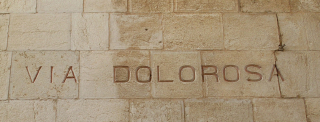 |
| There
is a dispute as to where the Via Dolorosa actually begins, but one
popularly held belief is that Jesus was brought before Pontious Pilate at
the Tower of Antonia, making that the first station. The second
station is now a Franciscan monastery and contains two chapels that are
part of the Via Dolorosa.
Inside the
Condemnation Chapel (right) |
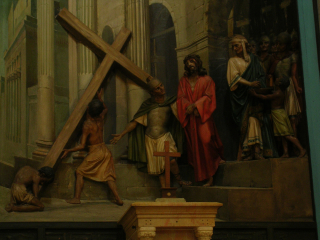 |
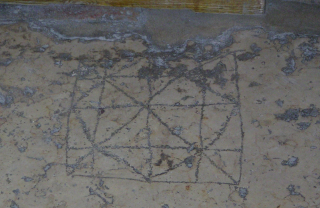 |
Patterns
etched in the rock where Roman soldiers played games at the place where
Jesus was condemned (left)
Stained glass
window inside the Chapel of Flagellation, where Jesus was flogged
(right)
|
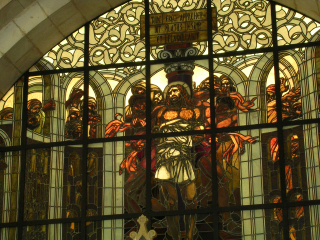 |
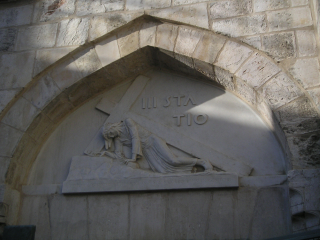 |
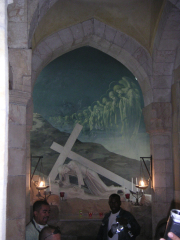 |
The
third station is marked by a small chapel and marks the spot where Jesus
fell the first time while carrying his cross. |
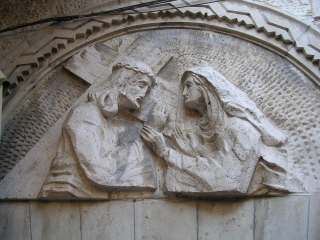 |
The
fourth station (left) marks where Jesus saw his mother and the fifth
station (right) is where Simon the Cyrene volunteered to carry the cross
for Jesus. |
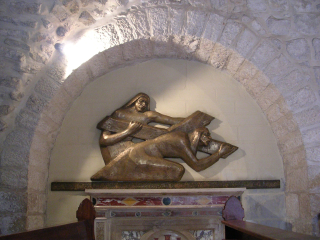 |
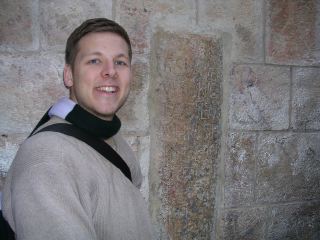 |
The
sixth station (left) is where Veronica wiped Jesus' face and is marked on
the remains of a column. The seventh station (right) is where Jesus
fell the second time. |
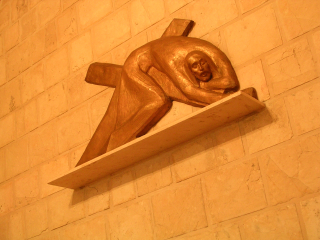 |
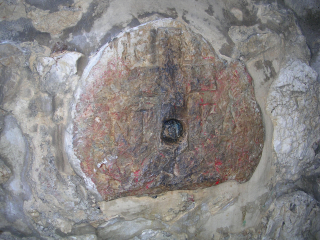 |
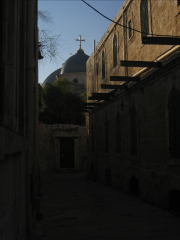 |
The
eighth station (far left) marks the spot where Jesus said to the women
mourning him, "Daughters of Jerusalem, do not weep for me, weep
rather for yourselves and for your children." The ninth station
is where Jesus fell the third time. |
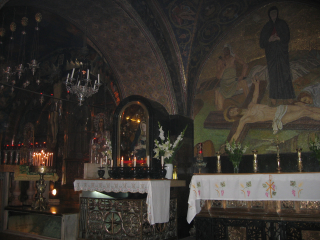 |
The
last five stations are in the Church of the Holy Sepulchre and mark the
locations where Jesus was stripped, nailed to the cross, crucified,
received by Mary, and buried. |
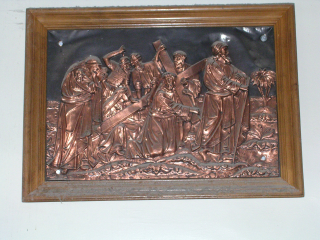 |
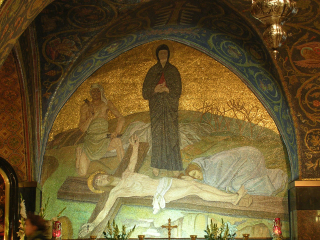 |
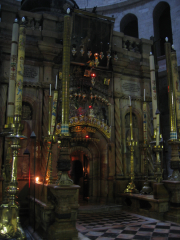 |
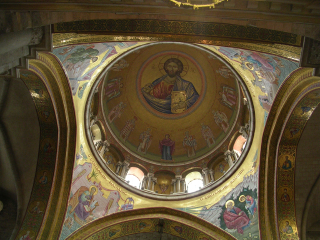 |
 |
| Bright
and early the next morning, as the sun was rising, four of us headed to
the bus station for another 17 hours of traveling back to Cairo. The
trip was long and uncomfortable, but relatively uneventful. |
| At
least our early morning wake up was rewarded with a beautiful sunrise over
the Old City |
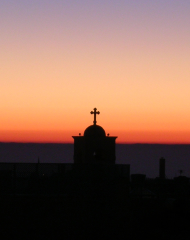 |
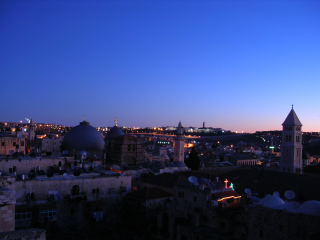 |
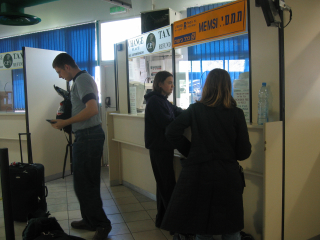 |
We
were a little surprised when we arrived at the border and had to pay a 70
shekel exit fee. We were able to do it by paying in shekels,
Egyptian pounds, and dollars (left).
|
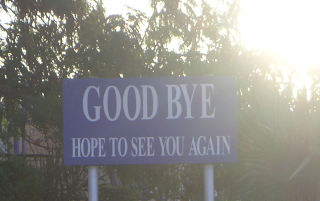 |
